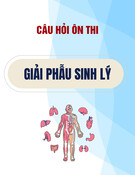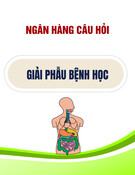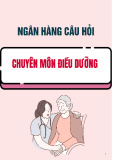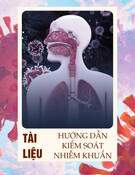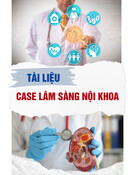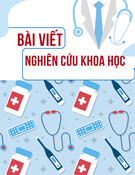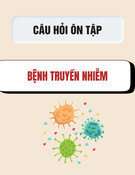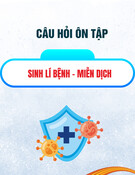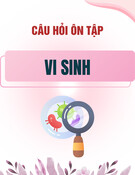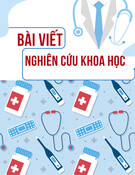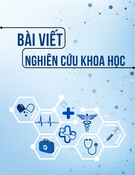
HUE JOURNAL OF MEDICINE AND PHARMACY ISSN 3030-4318; eISSN: 3030-4326HUE JOURNAL OF MEDICINE AND PHARMACY ISSN 3030-4318; eISSN: 3030-4326
106 107
Hue Journal of Medicine and Pharmacy, Volume 15, No.2/2025 Hue Journal of Medicine and Pharmacy, Volume 15, No.2/2025
Pharmacist-led counseling on insulin pens: A pre-post study in Nguyen
Tri Phuong Hospital
Tran Truong Phu Khanh1, Nguyen Huynh Thao Vy1,2, Nguyen Duc Quynh Chau2, Vo Thi Ha2,3,*
(1) University of Medicine and Pharmacy at HCMC, Ho Chi Minh City 700000, Vietnam
(2) Faculty of Pharmacy, Pham Ngoc Thach University of Medicine, Ho Chi Minh City 700000, Vietnam
(3) Nguyen Tri Phuong Hospital, Ho Chi Minh City 700000, Vietnam
Abstract
Background: Improper insulin pen use remains a significant barrier to optimal glycemic control, leading
to treatment inefficacy and increased risk of complications. This study aimed to evaluate the impact of
pharmacist-led counseling on outpatients’ knowledge, attitude, and practice (KAP) regarding insulin pen use
at Nguyen Tri Phuong Hospital. Materials and methods: A pre-post intervention study was conducted with
127 post-intervention patients out of 219 pre-interventions in a month (10 - 11/2022). Results: 219 patients
participated in the consultation, and 127 were research subjects. After the intervention, patients with good
knowledge, positive attitude, and good practice increased significantly from 57.5% to 91.3%. (p<0.001), from
78.7% to 93.7% (p<0.001), and from 43.3% to 88.2% (p<0.001), respectively. Correct steps increased strongly
were “perform a safety test or air shot” (from 18.9 - 24.4% to 69.3 - 76.4%), “keeping the injection button
at the injection site for at least 5 seconds” (from 46.5% to 89.8%), and “remove and discard the needle”
(from 17.3% to 67.7%). Conclusions: Pharmacist-led counseling significantly improved patients’ knowledge,
attitude, and practice regarding insulin pen use.
Keywords: knowledge, attitude, insulin pen, practice skills, clinical pharmacist.
1. INTRODUCTION
Diabetes is one of the global health concerns
today. According to statistics from the International
Diabetes Federation [1], more than 537 million
adults worldwide were affected in 2021. This number
is predicted to rise to 643 million by 2030. Over 3 in 4
adults with diabetes live in low- and middle-income
countries. In Vietnam, according to the Ministry of
Health [2], there were approximately 3.99 million
people aged 20 - 79 affected by the disease in 2021,
and this number is expected to rise to 4,96 million by
2030. In Ho Chi Minh City, the rate of new cases in
middle-aged people is 11.2% [3].
Insulin is a high-alert medication in both
inpatient and outpatient settings [4]. Many studies
also found that the diversity of insulin preparations,
the lack of knowledge of medicines, diabetes,
and errors in the practice of using insulin pens in
patients with diabetes were essential causes of non-
compliance with treatment, reduced effectiveness
and increased risk of harmful events of drugs such
as severe hypoglycemia, injection site reactions,
and diabetes complications [5]. Many studies
showed that educational interventions led by
clinical pharmacists improved patients’ knowledge
of the disease, insulin use, diabetes control, and
prevented its complications [6-8].
As a developing country, Vietnam is at an early
stage in implementing clinical pharmacy activities
in chronic diseases. The most recent development
in this area was Vietnam’s Ministry of Health’s
release of a Guideline on clinical pharmacy practice
for pharmacists in the number of non-communicable
diseases in 2019 [9]. This is considered as a national
and professional guide with scientific and practical
value that will help implement and evaluate clinical
pharmacy activities at hospitals. Of those, there is
a detailed guideline of clinical pharmacy practice
for the management of diabetes. Among the early
adopters, Nguyen Tri Phuong Hospital, a tertiary care
center in Ho Chi Minh City, established one of the
first pharmacist-led outpatient clinics in the country.
Despite serving a large diabetic population, improper
insulin pen use remains common, highlighting the
urgent need for effective patient education. This
study aimed to evaluate the impact of pharmacist-
led counseling on outpatients’ knowledge, attitude,
and practice (KAP) regarding insulin pen use, thereby
contributing to the growing evidence base for
clinical pharmacy roles in Vietnam.
*Corresponding Author: Vo Thi Ha. Email: havt@pnt.edu.vn
Received: 3/12/2024; Accepted: 9/4/2025; Published: 28/4/2025
DOI: 10.34071/jmp.2025.2.16

























